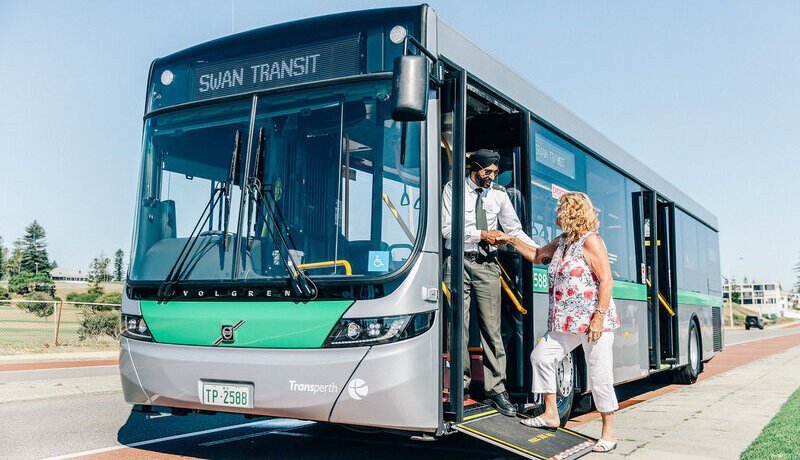CES Recap: It’s Time to Put Humans Back at the Center of the Autonomous Experience
There’s nothing more exhilarating for a technophile than stepping foot on the exhibition hall floor at the Consumer Electronics Show (CES) in Las Vegas. Every year, more than 170,000 professionals representing the entire spectrum of today’s tech market flood into Nevada for a chance to experience the latest in futuristic, mind-bending product concepts from the world’s largest brands.
“Concepts” is a key word because what you see at CES is often as much fantasy as it is reality. For manufacturers, it’s not just a place to promote new product releases, it’s a chance to show off their vision for the future in three dimensions, building excitement around not only their brand but the shape of things to come.
There was no question where I wanted to spend my time at the show. Auto manufacturers and smart mobility providers from around the globe were showing off their boldest and brightest new ideas on the exhibit floor, giving auto lovers like myself the chance to step inside their concepts and see the future of personal and commercial transportation firsthand.
Mercedes drew large crowds with its Vision Van, a concept delivery vehicle that combines package-sorting robots with rooftop, solar-charged drones to deliver packages more efficiently. Hyundai garnered its own buzz with its out-of-the-box Mobility Vision car that parks itself in the owner’s living room and doubles as a sofa.
But for me, the standout exhibit was Toyota’s Concept-i. The guiding principle of the Concept-i is what Toyota calls “kinetic warmth” – incorporating AI, yes, but also retaining the fun of driving (or riding while the car drives autonomously, depending on the mode you select). The vehicle’s AI, named Yui, provides a highly contextual, personalized experience represented by a cartoon-like face that’s a major step up from pushing a button and speaking to Siri. Yui is tuned to take care of you on multiple levels by maintaining a complete contextual awareness of not only your drive, but your day. She can appear on different surfaces throughout the car, directing your attention to an obstacle as the car backs up, conveying information about your trip and even relocating to the outside to warn pedestrians if they’re coming too close. If you need to make sure the restaurant knows you’re running late or your spouse knows you’re on your way home, you just have to tell Yui, and she’ll make it happen. Sitting in that beautiful, highly tuned, futuristic machine, it was undeniable that Toyota hit their mark – it was not only interesting for me, it was fun.
Toyota’s ethos for this project touches upon a subject I think is vitally important to explore as we move deeper into the era of smart mobility: Many autonomous vehicle makers are focused on taking care of our safety and efficiency. But are they taking care of our feelings?
The human experience has always been at the heart of travel. A good driving experience is a symphony of small elements that adjust and harmonize based on the current environment, mood and context. The Concept-i creates a fun experience using an innovative communication style, but I think we can go a step further.
Take the idea of “safety.” Autonomous vehicle engineers have been working hard to solve the challenge of making autonomous driving consistently safe using deep learning and highly tuned sensor technology. But it’s worth considering that what a machine knows to be safe from an engineering perspective might not feel safe or comfortable to the passenger. The speed at which the vehicle takes a roundabout, how it adjusts based on changing weather conditions, how assertively it tries to pass slower (non-autonomous) vehicles – these factors all play a role in whether we reach our destinations feeling relaxed and happy or stressed out and nauseated. Moreover, what feels safe to one person might startle another, so each manufacturer’s version of “Yui” will need to be skilled in responding to passengers’ individual driving preferences.
Perceived safety can have a huge effect on my experience as I commute to work and play, certainly, but what if I travel long distances for a living? What if I’m delivering hazardous or fragile materials? Fleet-based and mobile companies are going to be highly selective about the customizability and driving styles of vehicles they deploy, both for the satisfaction of their employees and the security of their cargo.
For these reasons, perceived safety will play a major role in determining whether each autonomous vehicle model succeeds or fails. Building perceived safety requires a highly tuned ability to anticipate, whether it’s anticipating passengers’ reactions, anticipating weather or traffic changes, or anticipating passengers’ comfort level based on how long they’ve been in transit.
So as I left CES, exhilarated and inspired by the visionary ideas I saw unfolding, I also felt renewed in my commitment to help companies build a mobile future that is not only safe for drivers and passengers on a physical level, but an emotional one.
It’s worth noting that these challenges may appear exclusive to the new era of smart mobility, but they’re merely an evolution of concerns GreenRoad has been solving for commercial fleets for over a decade. The fleet vehicles may change dramatically – from gas-powered monsters to more efficient electric and hybrid models and soon autonomous varieties – but safety, powered by in-depth contextual understanding, has always been at the center of fleet success. When drivers take their hands off the wheel and become passengers in their own vehicles, it will not remove their need to feel safe and comfortable. It will simply make them entirely dependent on their vehicle’s ability to create a positive experience in every context. So as we define expectations for what makes a successful smart mobility experience, it’s vital that we don’t forget to show a little love to the humans at the center of the journey.





